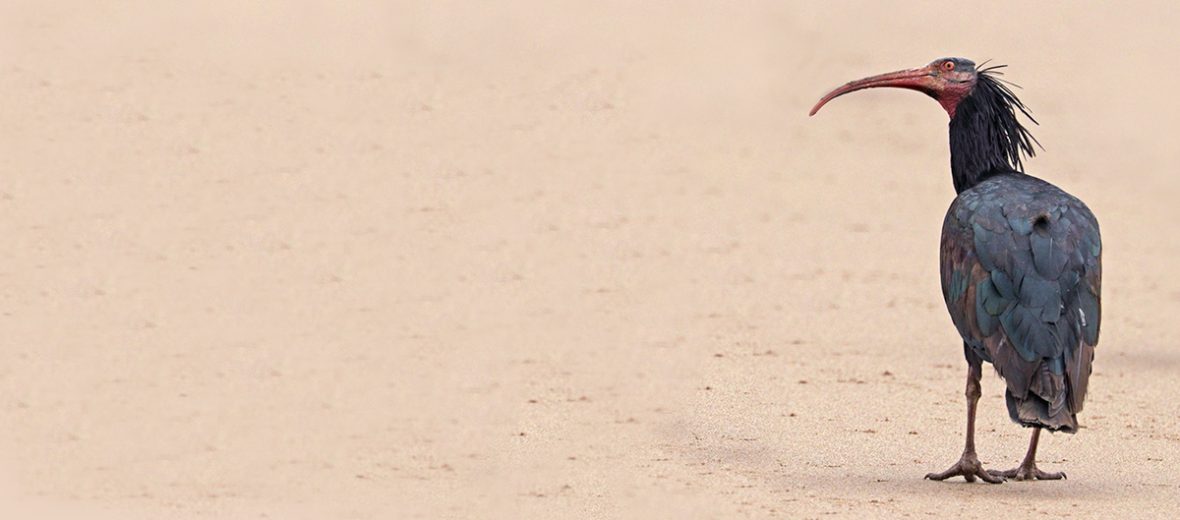
The northern bald ibis, aka waldrapp or hermit ibis, is a migratory creature that can be found in a number of locales, depending on the season. They can be found in Morocco, Yemen, Syrian Arab Republic, Eritrea, Saudi Arabia, Jordan, and possibly Iraq. These birds prefer habitats that take on a semi-desert, rocky, or barren scenery. Unfortunately, they face a great deal of threats, like habitat destruction and loss at the hands of residential and commercial developments, farming, ranching, and dams; interference from human recreational activities; hunting; trapping; civil unrest; pollution; and climate change (causing draughts). The IUCN lists these birds as Endangered, with only an estimated 249 wild individuals remaining, as of 2018. As of that year, their populations were considered stable.
First the Stats…
Scientific name: Geronticus eremita
Weight: Up to 2.6 lbs.
Length: Up to 31 inches
Wingspan: Up to 53 inches
Lifespan: Up to 37 years
Now on to the Facts!
1.) Northern bald ibis’ feast on grasshoppers, mole-crickets, crickets, beetles, amphibians, small reptiles, scorpions, snails, worms, fish, the occasional rodent, and smaller ground-nesting birds.
2.) Gulls and ravens prey on these birds.
3.) Their fossil records date back to approximately 1.8 million years.
4.) Reintroduction programs have been created internationally to help increase their numbers.
5.) In ancient Egypt, these birds were considered to be a symbol of splendor and magnificence.
But wait, there’s more on the northern bald ibis!
6.) Morocco, Sudan, Syria, Algeria, Turkey, and Yemen have all created postage stamps depicting the northern bald ibis.
7.) Their nest is constructed with sticks.
Did you know…?
These ibis’ were considered an embodiment of the Egyptian god Thoth, scribe of the gods, who was typically depicted with a man’s body and the head of an ibis.
8.) Females lay up to 3 eggs that hatch in up to 25 days.
9.) Chicks fledge in up to 50 days.
10.) The northern bald ibis is diurnal (active during the day).
Now a Short Northern Bald Ibis Video!
Be sure to share & comment below! Also, check out the Critter Science YouTube channel. Videos added regularly!
Want to suggest a critter for me to write about? Let me know here.
Some source material acquired from: Wikipedia & IUCN
Photo credit: Charles J. Sharp



